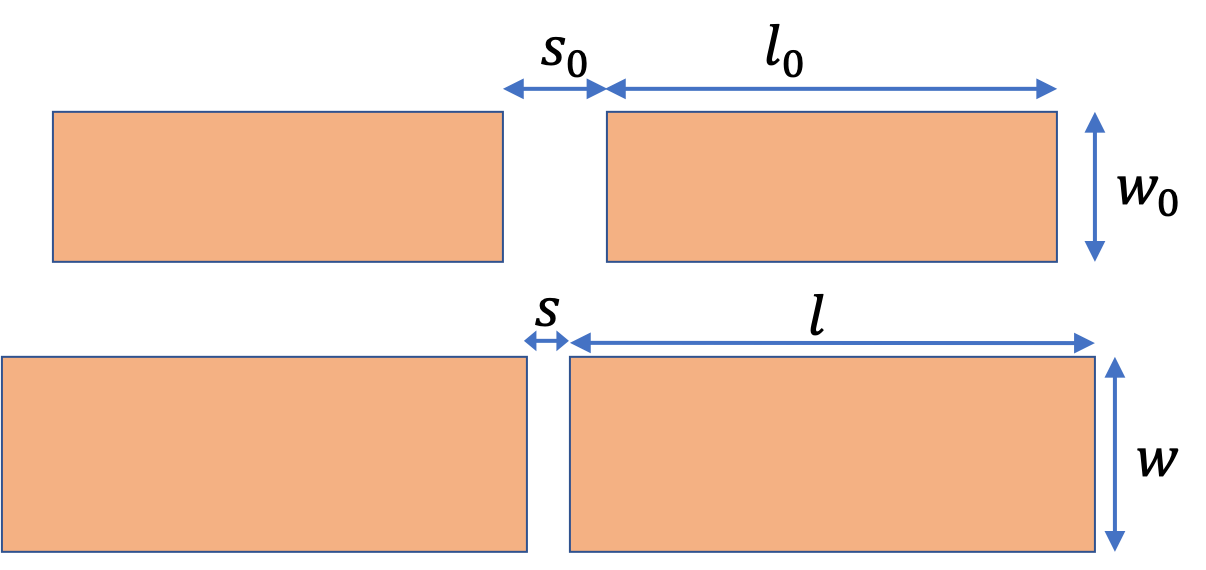Example 20.7. Expansion of Copper Plates When Heated.
Two copper plates each of length \(l_0 = 15\text{ cm}\) and width \(w_0 = 2\text{ cm}\) at temperature \(25^{\circ}\text{C}\) are placed parallel lengthwise on a wooden plank as shown in the figur below. There is a separation of \(s_0 = 2\text{ cm}\) from one edge of one plate to the nearest edge of the other plate. They are then placed in an oven and heated to a temperature of \(85^{\circ}\text{C}\text{.}\) What is the separation \(s\) between the plates at that temperature? (Ignore any change in the wooden plank.)

Answer.
\(1.985\text{ cm}\)
Solution.
The length expands linearly as does the width. The separation reduces due to expansion along the length. Each plate will expand by \(\Delta l = l - l_0\text{,}\) half of which will come from each plate will reduce the gap between the plates. Therefore, expansion of the two plates together will reduce the distance be \(\Delta l\text{.}\)
Using the coefficient of linear expansion of copper we obtain
\begin{align*}
\Delta l \amp = \frac{16.5\times 10^{-6}}{\ ^{\circ}\text{C}}\times 0.15\ \text{m} \times (85-25)^{\circ}\text{C} = 0.15 \ \text{mm}.
\end{align*}
Therefore, the separation will be \(2.0\text{ cm} - 0.015\text{ cm} = 1.985\text{ cm}\text{.}\)



